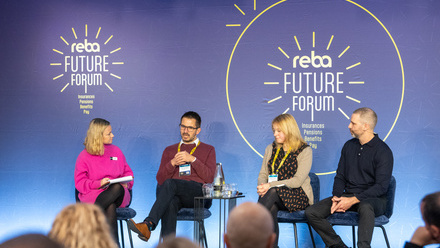Avoid these pitfalls to ensure successful use of (benefits) technology

While selecting the right application is a crucial starting point, the best systems in the world will serve no benefit to your employees, or the business if staff don’t engage and use it. And benefits technology is no exception.
We advocate a holistic approach which enables you to have a single strategy ensuring that your workforce have all their benefits in one place, with easy access. But whether you have one or ten solutions in place, it’s the role of HR to create a robust strategy to deliver a positive ROI and garner engagement. Here are some key steps to ensure you avoid the pitfalls of implementing your benefits technology.
1) Avoid a one-size-fits-all approach
For the first time ever, there are now five different generations in the workplace. The age gap between these individuals reaches up to 50 years, with each generation having its own challenges and needs. Providing staff benefits is no longer a one size fits all approach. Personalised options are key to satisfy generational needs as staff increasingly want benefits that are appropriate to their stage in life.
2) Keep it simple
User experience should be straightforward for the purposes of simplicity for all generations. It should be intuitive and logical so that staff can move around the platform with ease. Does it meet the user experience hierarchy of needs - functional, reliable, usable, convenient, pleasurable and meaningful?
Avoid overwhelming employees with different messaging and action points for them to engage. Multiple point solutions, requiring staff to remember multiple logins lead to low utilisation and an overall poor user experience. This is very important for the less tech-savvy.
Create a user-friendly, dedicated platform where all of the information is in one place. Separated solutions don’t gel together well and struggle to create stickiness, repeat use and consistency.
Cater to employee generational preferences by making benefits related information easily accessible both online and via mobile is maximise on-going utilisation. It’s private and employees can access it 24/7/365.
3) Communicate, communicate and communicate
Staff won’t engage with technology unless they know to use it and how it will benefit them. A big bang launch is obviously important to raise awareness and create some excitement, but don’t let it wane. A successful communications strategy that drives continuous engagement has to be all year round.
Ensure you use a mix of communication channels too so that you effectively reach all staff. Your millennials will embrace social media, push notifications via apps and instant messaging, but don’t overlook more traditional methods for your baby boomers and others. According to Thompsons UK Employee Benefits Watch 2016/17, face to face communications remains one of the preferred methods of communication.
4) Provide on-going training
Similarly, a one-off training session won’t be enough for most employees; it’s important to offer on-going training for at least the first four months so staff get familiar with how to use the technology and afterwards to offer regular one-off training sessions.
5) Appoint ambassadors
Identify and select ambassadors across the organisation to champion the usage and benefits of the package and the technology, both horizontally and vertically. Senior management support is crucial for company-wide buy-in.
6) Choose a customer focused provider
As well as having a supplier who can provide the benefits solution you need, ensure they provide ongoing support through a dedicated point of contact and work with you to maximise on-going engagement though an effective communications and training strategy.
7) Use data analytics
A good provider will work with you to make sure you get the reporting and data you need to continuously improve your benefits offer to positively impact your recruitment, staff engagement, wellbeing and retention.
Importantly it will help you measure the impact your benefits programme has in these areas on the business. Research shows that those organisations that are digitally measuring the impact of benefits on employee wellbeing are almost twice as likely to be very effective in meeting their benefits engagement objectives.
A successful benefits programme can have a direct impact on your employer band. The right mix of benefits, available all in one place and communicated consistently can be a key driver in improving staff recruitment, employee engagement and retention and your overall appeal as a workplace.
David Shearman is strategic account director at Lifeworks.
This article was provided by Lifeworks.






